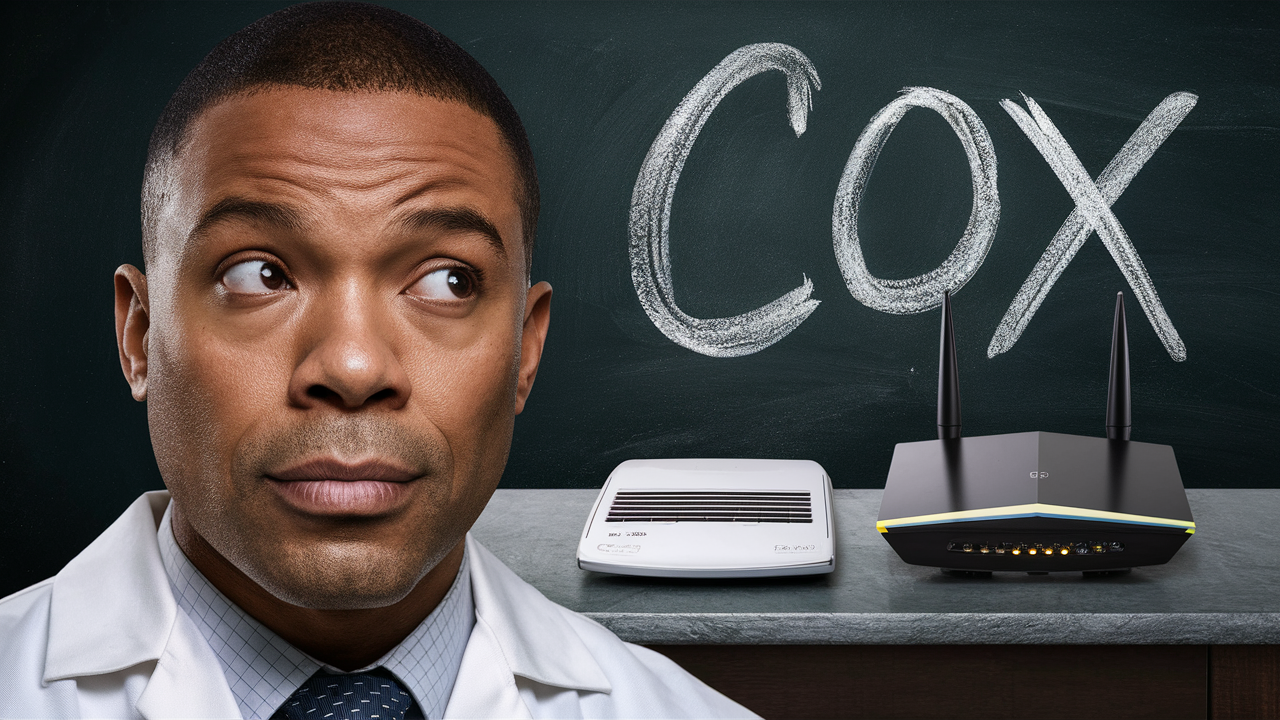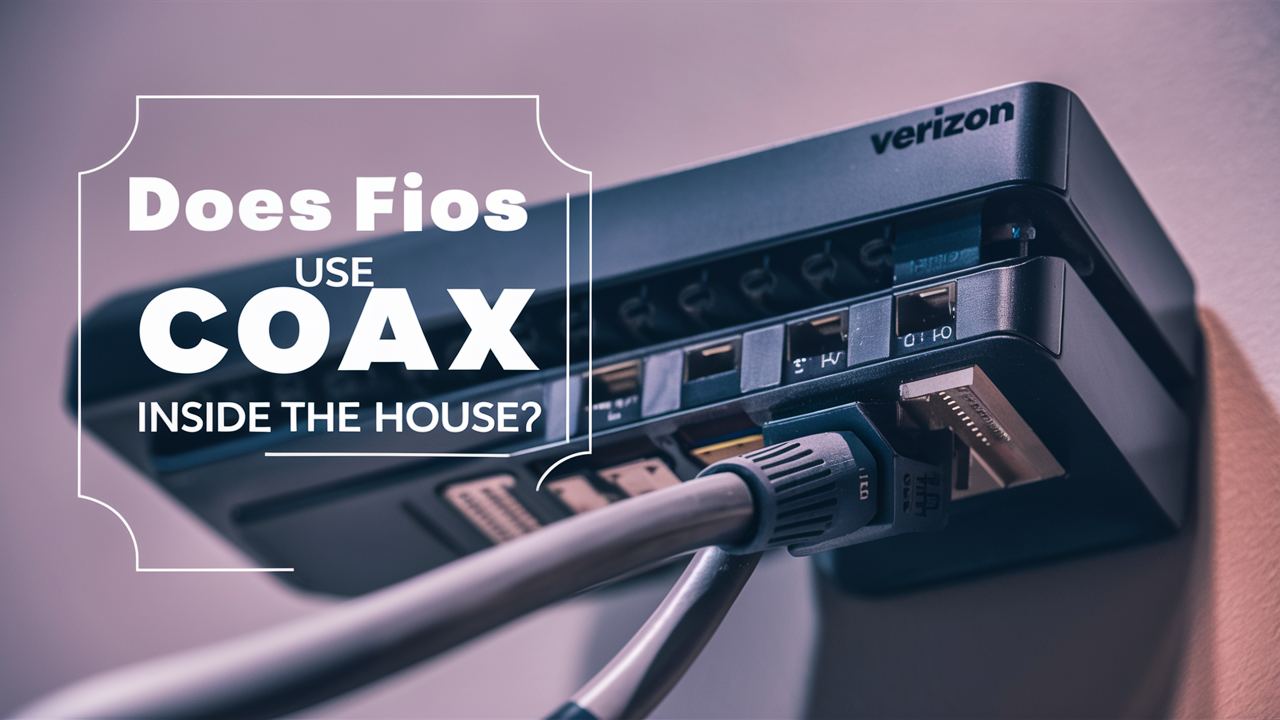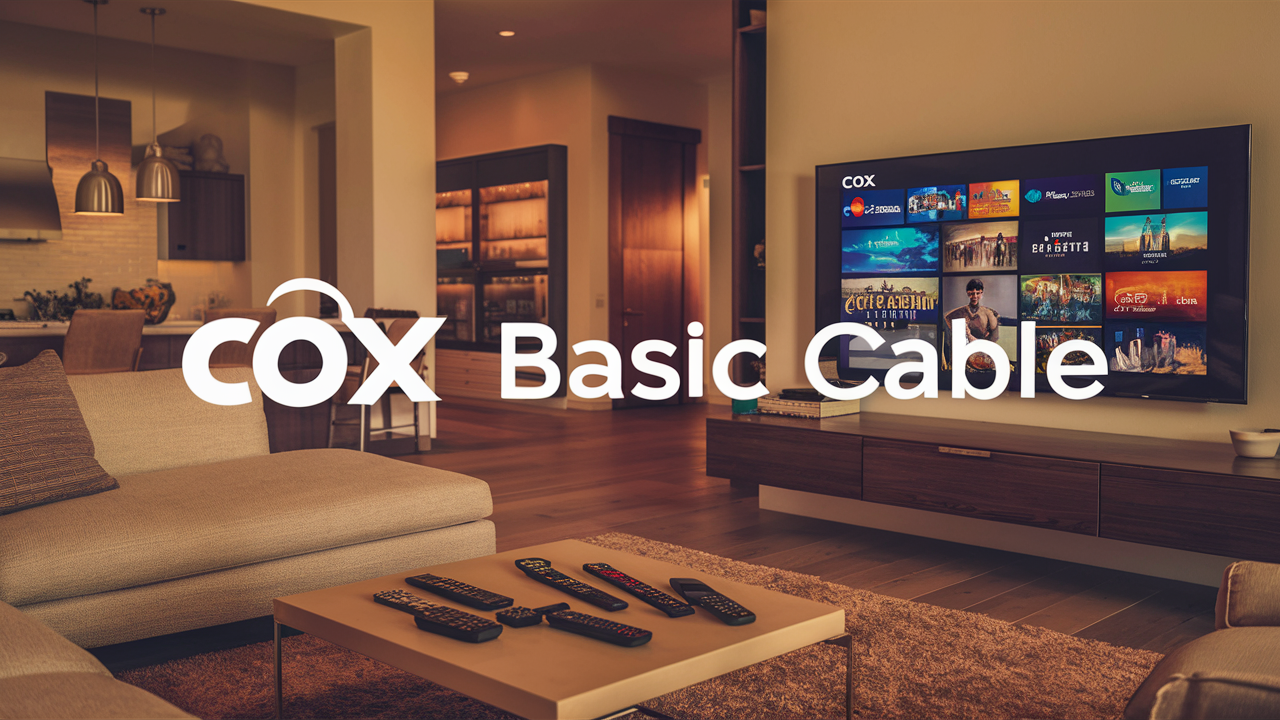Does Cox use a Modem or Router?

Cox Communications, a major internet service provider, typically provides customers with a gateway device that functions as both a modem and a router. This all-in-one unit handles the essential tasks of connecting to Cox's network (modem function) and creating a Wi-Fi network for your devices (router function). Understanding this distinction is crucial for troubleshooting and optimizing your home internet setup.
Cox Internet: Decoding Your Connection Device
In today's digitally interconnected world, a reliable internet connection is no longer a luxury but a necessity. Whether you're streaming your favorite shows, attending virtual meetings, or simply browsing the web, your internet service provider (ISP) plays a pivotal role. For many households across the United States, Cox Communications is a primary provider of high-speed internet. However, a common point of confusion for Cox customers, and indeed for many internet users, revolves around the equipment they use to access the service. Specifically, the question arises: Does Cox use a modem or a router? This article aims to demystify this crucial aspect of your home network, providing a comprehensive understanding of how Cox delivers internet to your devices. We will delve into the functions of modems and routers, explain Cox's typical equipment strategy as of 2025, and offer practical advice for managing your home internet connection.
The landscape of home networking has evolved significantly. Gone are the days when a single, bulky device handled all your internet needs. Modern internet connectivity relies on a sophisticated interplay of hardware, and understanding these components is key to ensuring optimal performance and troubleshooting effectively. Cox, like many other major ISPs, has adopted a strategy that simplifies the user experience by often providing a single piece of equipment that performs both modem and router functions. This device is commonly referred to as a "gateway." By the end of this article, you'll have a clear picture of what your Cox equipment does, why it's configured the way it is, and how to leverage it for the best possible internet experience in 2025.
The Core Components: Modem vs. Router Explained
To understand Cox's approach, we first need to define the fundamental roles of a modem and a router in a home network. These two devices, while often integrated into a single unit, perform distinct and vital functions.
The Modem: Your Gateway to the Internet
The modem, short for modulator-demodulator, is the device that bridges your home network with your Internet Service Provider's (ISP) network. Its primary job is to translate the digital signals from your computer or network into analog signals that can travel over the physical infrastructure (like coaxial cable, fiber optic lines, or telephone lines) used by your ISP. Conversely, it translates the incoming analog signals from your ISP back into digital signals that your devices can understand.
Think of it as a translator. The internet data traveling from Cox's network is in a format that your devices can't directly use, and vice versa. The modem is the essential interpreter that makes this communication possible. Without a modem, your home network would be isolated from the vast network of the internet. It typically has a connection for the incoming cable or fiber line from the wall and an Ethernet port to connect to a router or a single computer.
The Router: Your Home Network's Traffic Director
The router, on the other hand, is responsible for creating and managing your local area network (LAN) within your home. Its main functions include:
- Connecting Multiple Devices: A router allows multiple devices (computers, smartphones, smart TVs, gaming consoles, etc.) to share a single internet connection provided by the modem.
- Assigning IP Addresses: It acts as a DHCP (Dynamic Host Configuration Protocol) server, assigning a unique local IP address to each device connected to your network, ensuring data packets reach the correct destination within your home.
- Creating a Wi-Fi Network: Most modern routers broadcast a wireless (Wi-Fi) signal, enabling devices to connect without physical cables.
- Network Address Translation (NAT): This crucial function allows all devices on your home network to share a single public IP address provided by your ISP, enhancing security by masking individual devices from the public internet.
- Firewall Protection: Routers often include basic firewall capabilities to protect your network from unauthorized access.
In a traditional setup, you would have a separate modem connected to the ISP's line, and then an Ethernet cable running from the modem to the WAN (Wide Area Network) port of a separate router. The router would then broadcast Wi-Fi and provide additional Ethernet ports for wired connections.
Cox's Approach in 2025: The All-in-One Gateway
As of 2025, Cox Communications, like many other leading ISPs, primarily equips its customers with a single device that combines the functionalities of both a modem and a router. This integrated unit is commonly referred to as a gateway or a modem/router combo. When you sign up for Cox internet service, the equipment provided is typically one of these gateways.
This approach simplifies installation and management for the average user. Instead of dealing with two separate devices, customers have a single unit to set up and maintain. The gateway receives the internet signal from Cox's network (modem function) and then immediately creates and broadcasts your home Wi-Fi network, along with providing Ethernet ports for wired connections (router function). This integrated design is a standard offering from most ISPs today, driven by convenience and cost-effectiveness.
Cox offers various gateway models, often depending on the internet speed tier you subscribe to. Higher speed plans might come with more advanced gateways that support newer Wi-Fi standards like Wi-Fi 6 (802.11ax) or even Wi-Fi 6E, offering faster speeds, better capacity for multiple devices, and improved performance in congested wireless environments. As of 2025, the prevalence of Wi-Fi 6 and the early adoption of Wi-Fi 7 are becoming more common in these advanced gateways, ensuring that your home network can keep pace with the increasing demands of modern internet usage.
Why Cox Uses Gateways: Benefits and Drawbacks
The decision by Cox and other ISPs to favor gateways is based on a balance of advantages and disadvantages.
Benefits of Cox Gateways:
- Simplicity for the User: This is the primary driver. One device to set up, one device to manage, and fewer cables to deal with. This significantly reduces the complexity for non-technical users.
- Reduced Installation Costs: For Cox, providing a single, pre-configured unit can streamline the installation process for their technicians, potentially lowering operational costs.
- Optimized Performance: Gateways are designed and tested by Cox to work seamlessly with their network infrastructure. This can lead to a more stable and reliable connection compared to a setup with mismatched third-party modems and routers.
- Remote Management: ISPs can often remotely access and manage gateway devices for troubleshooting and firmware updates, which can resolve issues without requiring a technician visit.
- Integrated Wi-Fi: The built-in router functionality ensures that Wi-Fi is readily available as soon as the gateway is activated, making it easy to connect wireless devices.
Drawbacks of Cox Gateways:
- Limited Customization and Control: Users often have less control over advanced network settings compared to having a separate, high-end router. Features like advanced Quality of Service (QoS) settings, VPN client support, or detailed parental controls might be restricted or unavailable.
- Potential for Outdated Technology: While Cox provides updated models, the gateway you receive might not always have the latest Wi-Fi standards or the most powerful processor compared to dedicated, premium routers available on the market. This can become a bottleneck for users with very high-speed internet plans or a large number of connected devices.
- Rental Fees: Cox typically charges a monthly rental fee for their gateway devices. Over time, this can add up to a significant cost.
- Single Point of Failure: If the gateway malfunctions, both your internet connection and your Wi-Fi network go down simultaneously. With separate modem and router, you might be able to isolate the issue to one device.
- Firmware Updates Controlled by ISP: While beneficial for stability, ISP-controlled firmware updates can sometimes introduce bugs or remove features that users relied on.
In 2025, with the increasing demand for faster speeds, lower latency for gaming, and the proliferation of smart home devices, some users find that the performance of ISP-provided gateways, particularly older models, can be a limiting factor. This has led to a growing interest in using third-party equipment.
Identifying Your Cox Device: A Practical Guide
Determining whether your Cox device is a modem, a router, or a gateway is straightforward. Here's how:
Check the Physical Device:
- Number of Ports: A standalone modem typically has only one coaxial or fiber input port and one Ethernet output port. A standalone router will have one WAN Ethernet port (often a different color) and multiple LAN Ethernet ports (usually 4 or more) for wired connections, plus Wi-Fi antennas.
- Labeling: Look for labels on the device itself. Cox usually labels their equipment clearly. You might see terms like "Gateway," "Modem/Router," or a specific model number. Common Cox gateway models include Arris Surfboard models (e.g., SBG series) or Technicolor gateways.
Check the Connections:
- Single Device: If you have only one box connected to the incoming cable/fiber line from the wall, and this box is broadcasting a Wi-Fi signal (you can see its SSID in your device's Wi-Fi settings), it's almost certainly a gateway.
- Two Devices: If you have two separate boxes, one connected to the wall line (likely a modem) and another connected to the modem via an Ethernet cable (likely a router), then you have separate components.
Access the Device Interface:
You can often log into the device's web interface to confirm its capabilities. For most Cox gateways, you can access this by typing an IP address like 192.168.0.1 or 192.168.1.1 into your web browser. The login credentials are usually found on a sticker on the device itself. Within the interface, you can see settings related to both modem connectivity (e.g., connection status, signal levels) and router functions (e.g., Wi-Fi settings, connected devices, DHCP settings).
In summary, for the vast majority of Cox customers in 2025, the device they have is a gateway, performing both modem and router functions.
Troubleshooting Common Cox Connectivity Issues
Understanding that your Cox device is likely a gateway simplifies troubleshooting. When you encounter internet problems, you're dealing with a single point of failure for both your connection to Cox and your internal network.
The First Step: The Reboot
The most common and often most effective troubleshooting step is to power cycle your gateway. This is essentially restarting the device and can resolve many temporary glitches.
- Unplug the power adapter from the back of the gateway.
- Wait for at least 30 seconds. This allows the device to fully discharge and reset.
- Plug the power adapter back in.
- Wait for the device to fully boot up. This can take several minutes. Observe the lights on the front of the gateway; they should indicate a stable connection.
This simple step can fix issues ranging from slow speeds to complete internet outages.
Checking Physical Connections:
Ensure that the coaxial cable or fiber optic cable is securely connected to the back of the gateway and to the wall outlet. Loose connections are a frequent cause of intermittent connectivity issues.
Wi-Fi vs. Wired Issues:
If you're experiencing slow speeds or connectivity problems, try connecting a device directly to the gateway using an Ethernet cable. If the wired connection works well, the issue is likely with your Wi-Fi signal. If both wired and wireless connections are problematic, the issue might be with the gateway itself or the connection from Cox.
Contacting Cox Support:
If rebooting and checking connections don't resolve the issue, it's time to contact Cox support. They can remotely diagnose your gateway and the connection from their end. Be prepared to provide them with information about the lights on your gateway and any troubleshooting steps you've already taken.
Optimizing Your Cox Home Network
Even with a gateway, there are several steps you can take to ensure your Cox internet service performs at its best in 2025.
Gateway Placement:
The location of your gateway significantly impacts Wi-Fi coverage. For optimal performance:
- Place the gateway in a central location in your home.
- Keep it in an open area, away from obstructions like thick walls, large furniture, or metal objects.
- Avoid placing it near other electronic devices that can cause interference, such as microwaves, cordless phones, or Bluetooth devices.
- Elevate the gateway if possible, rather than placing it on the floor.
Wi-Fi Channel Optimization:
Your gateway broadcasts Wi-Fi on specific channels. If many networks in your area are using the same channel, it can lead to congestion and slower speeds. Many gateways have an option to automatically select the best channel, but you can also manually select less congested channels through the device's web interface. Newer gateways often support the 5GHz and 6GHz bands (for Wi-Fi 6E), which generally have less interference and offer faster speeds than the 2.4GHz band, though with a shorter range.
Firmware Updates:
Ensure your gateway's firmware is up to date. While Cox typically manages this automatically, it's worth checking periodically. Updates can improve performance, security, and stability.
Secure Your Wi-Fi Network:
Always use a strong, unique password for your Wi-Fi network (WPA2 or WPA3 encryption is recommended). This prevents unauthorized users from accessing your internet, which can slow down your connection and pose a security risk.
Consider a Mesh Wi-Fi System:
If you have a large home or persistent Wi-Fi dead zones, even with optimal gateway placement, consider investing in a mesh Wi-Fi system. These systems consist of a main router and satellite nodes that work together to blanket your home with a strong, seamless Wi-Fi signal. You would typically put your Cox gateway into "bridge mode" (disabling its router functions) and connect the main mesh router to it.
When to Consider Your Own Equipment
While Cox's gateways are convenient, there are compelling reasons why some users opt to purchase their own modem and router (or a high-end third-party gateway).
Cost Savings:
As mentioned, Cox charges a monthly rental fee for their gateways. Buying your own compatible modem and router can be more cost-effective in the long run, especially if you plan to stay with Cox for several years. Ensure any modem you purchase is on Cox's approved list to guarantee compatibility.
Enhanced Performance and Features:
Dedicated, high-end routers often offer superior Wi-Fi performance, advanced features, and better coverage than ISP-provided gateways. This is particularly relevant for:
- Households with many connected devices.
- Gamers who require low latency and stable connections.
- Users who need advanced network management features (e.g., VPNs, custom QoS, robust firewalls).
- Those with internet plans exceeding 500 Mbps, where the gateway's Wi-Fi capabilities might become a bottleneck.
Future-Proofing:
When you buy your own equipment, you can choose devices with the latest technologies, such as Wi-Fi 6E or even Wi-Fi 7 in 2025, ensuring your network is ready for future internet speeds and devices.
Bridge Mode:
If you decide to use your own router, you will typically need to put your Cox-provided gateway into "bridge mode." This disables the gateway's router functions, allowing your separate router to handle all network management, including Wi-Fi. This prevents potential conflicts and ensures your advanced router is in full control.
When purchasing your own modem, always verify its compatibility with Cox Communications' network in your specific area. You can usually find a list of approved modems on Cox's website.
Conclusion
In conclusion, the question "Does Cox use a modem or router?" is best answered by understanding that Cox Communications, as of 2025, predominantly provides customers with a single, integrated device known as a gateway. This gateway performs the essential functions of both a modem (connecting your home to Cox's network) and a router (creating and managing your home Wi-Fi network). This all-in-one approach simplifies setup and management for the average user, offering a convenient plug-and-play experience.
While gateways are efficient for many, it's crucial to be aware of their limitations. These include potentially fewer advanced customization options compared to separate devices, the possibility of not always featuring the absolute latest Wi-Fi technology, and the ongoing monthly rental fees charged by Cox. For users with demanding internet needs, such as heavy online gaming, extensive smart home device usage, or those subscribing to very high-speed internet tiers, investing in your own modem and router setup or a premium third-party gateway might offer superior performance, greater control, and long-term cost savings. Remember to always ensure any self-purchased modem is compatible with Cox's network.
By understanding the distinct roles of modems and routers, recognizing that Cox typically uses gateways, and implementing basic optimization and troubleshooting strategies, you can ensure a more reliable and efficient internet experience. Whether you stick with the provided gateway or opt for your own equipment, a well-configured home network is the foundation for enjoying all the benefits of high-speed internet in today's connected world.





